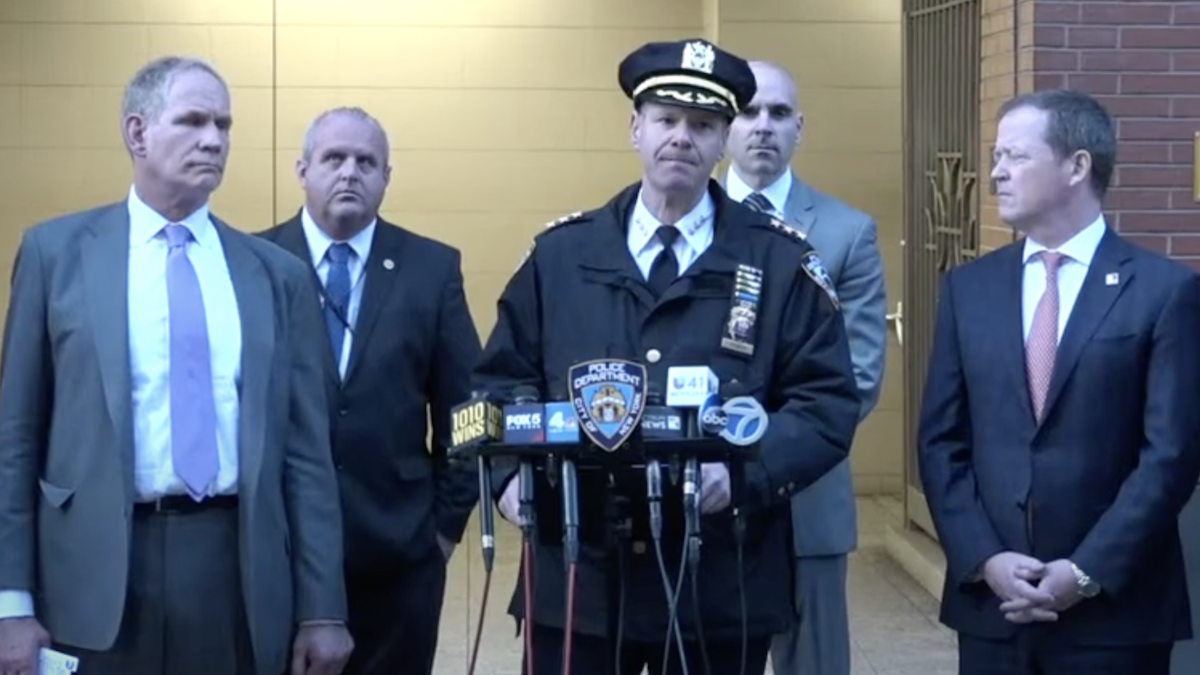
The verdict in the Kate Steinle case is the political right’s version of the Zimmerman trial.
You remember George Zimmerman, right? He was the overzealous neighborhood watch volunteer who shot Trayvon Martin to death in Florida in 2012. With the help of misleading and oversimplified early media reports, many people—particularly on the left—filed the case under the narrative of “evil white racist wantonly murders young black man.” So they were shocked and outraged when a jury aquitted Zimmerman.
But they were only shocked because they weren’t following the details of the case and weren’t warned as it became clear the prosecution wasn’t going to be able to prove its case beyond a reasonable doubt. They have since had a few similar experiences, such as the Michael Brown case in Missouri, where they clung to their early narrative and missed the facts that would have given them more realistic expectations.
The reaction to the Steinle case has certain similarities, but this time for people on the Right. Kate Steinle was an unsuspecting 32-year-old woman out for a stroll on the San Francisco waterfront when she was suddenly struck down by a bullet, which turned out to be fired from a gun held by José Garcia Zarate, a five-times-deported illegal immigrant from Mexico living in a “sanctuary city.” This fit perfectly into two big political narratives Trump supporters favor: that we’re in the middle of a runaway crime wave, and that illegal immigrants, especially from Mexico, are a major contributor to the breakdown of American society.
Now it’s their turn to be shocked and outraged after an acquittal, because their own partisan media never warned them about the weaknesses of the actual court case as it unfolded.
A Court Case Isn’t as Easy as the Public Opinion Case
The more you look at this case, and you might want to start with the local coverage, the more you realize how difficult it was always going to be to get a jury to render a verdict of premeditated murder beyond a reasonable doubt. The first big hole in the case is that Steinle was killed by a ricochet as the bullet bounced off the pavement near her. This could mean Garcia Zarate was aiming at her but was a bad shot, but it could also mean that he wasn’t aiming at her at all and struck her by accident.
This is reinforced by the fact that there was no connection between him and the victim, no known motive, and therefore no evidence of premeditation. The prosecutor closed his case by declaring that Garcia Zarate was “playing his own secret version of Russian roulette,” but it was so secret that there was no independent evidence for it, just a prosecutor’s speculation.
The shooter himself has told several different versions of the event, but the version his lawyers stuck to is that he found the gun on the ground wrapped in cloth, and when he picked it up, it discharged accidentally. We might find that implausible, but plausibility is not the standard here. The standard is proof beyond a reasonable doubt—and it’s a good thing, too, because God help us all if people could be thrown in jail on mere suspicion of probability.
The Prosecutor Made Mistakes, Too
From the beginning, this looked to me like a better case for manslaughter—the act of causing someone else’s death through recklessness or negligence. But as Sarah Rumpf points out, this is not the first time an overambitious prosecutor has reached too hard for the first-degree murder conviction the public wants and ended up reducing the chances of conviction on a lesser charge.
So Garcia Zarate was convicted on a weapons charge only. That’ll get him a couple of years under state law, though there may be a federal charge that could put him away for longer. Still, this is not what a lot of people were led to expect. And now they’re attributing it to California’s leftwing politics and the injustice of the system.
Three years ago, I gave some sound advice to the Left and the mainstream media about how to deal with cases involving firearms and the use of force. My central advice was that “individuals are not symbols and…every shooting has its own irreducibly concrete facts and context…. Every case of the use of force is a discrete incident with its own unique facts. It is not an abstract morality tale about racism or poverty or heavy-handed policing.” Nor is it a parable about illegal immigration and sanctuary cities.
This is advice the Right needs to remember, too, so they can avoid getting themselves sideswiped by a trial that doesn’t go how they thought it would.
Follow Robert on Twitter.









